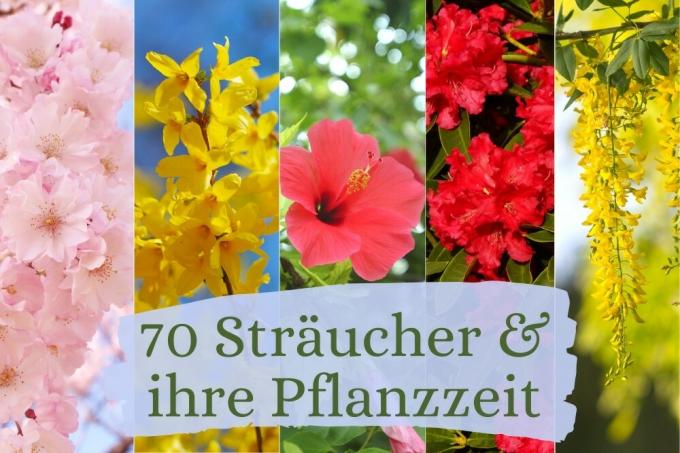
table of contents
- Planting time autumn: 27 trees
- Spring planting time: table for 29 shrubs
- Table: 14 shrubs for autumn and spring planting
- frequently asked Questions
When planting shrubs outdoors, the planting time is an important aspect in addition to the location. Depending on the wood, you have a different period of time.
In a nutshell
- The planting time for shrubs ranges from September to April
- Depending on the region, this will be shortened or lengthened
- It is not planted on frosty days to avoid cold damage
- Trees with bare roots are ideally planted in autumn
- Container goods and crops with root balls are preferably planted in spring
Planting time autumn: 27 trees
Spread over the year there are two planting times that are suitable for different shrubs. In addition to spring, autumn is mainly used as the planting time, which means that the classic planting time in Central Europe extends from September to April. Planting in summer is not recommended due to the heat. Autumn planting, on the other hand, takes place between September and the first days of frost, usually December, and is used to allow the plants to grow stronger for the next season. This improves vitality and reduces the need for water. Depending on where you live and the local climate, the time can be shorter or longer. Are suitable:
- bare-root trees
- Plants with root balls (less often)
- absolutely hardy species
- Coniferous bushes
The bare-root specimens in particular are usually planted in the ground in autumn. The reason for this is breeding. Usually the bare-root goods overwinter when planted with only weakly covered roots, which can have a negative impact on health. The autumn planting guarantees that the bare-root bushes are planted quickly and do not have to stand for a whole winter. A large number of species are therefore suitable for this planting time. You can find these in the following table:
- Apple (malus)
- Barberry (Berberis vulgaris)

- Common broom (Cytisus scoparius)
- Bride-Spierstrauch (Spiraea arguta)
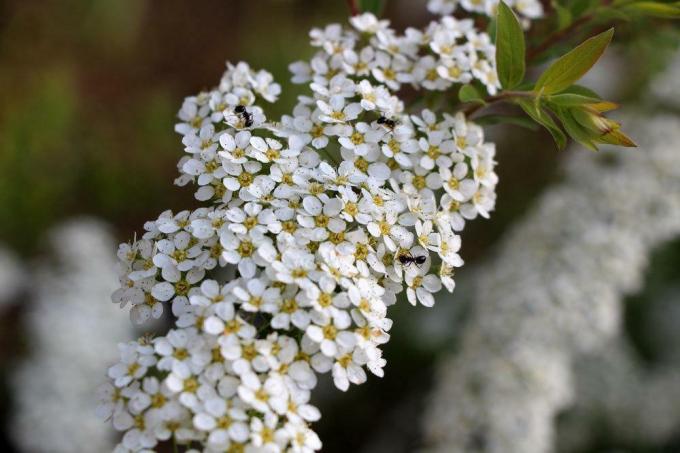
- Bristly taiga root (Eleutherococcus senticosus)
- Common hawthorn (Crataegus monogyna)

- Field maple (Acer campestre)
- lilac (Syringa)
- Mean Pimpernut (Staphylea pinnata)
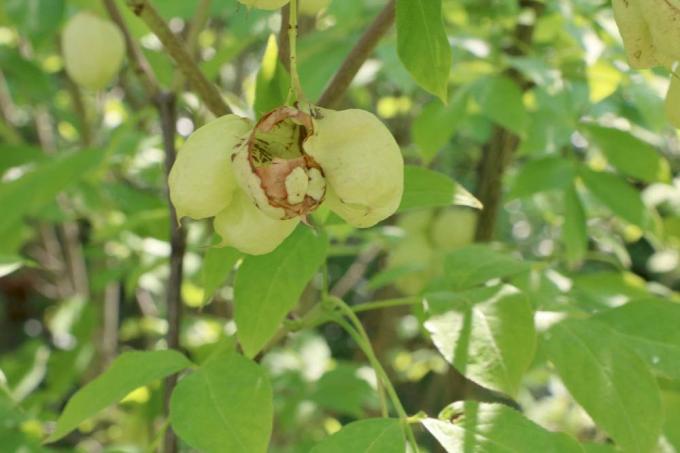
- Hazelnut (Corylus avellana)
- raspberry (Rubus idaeus)
- Japanese cherry blossom 'Autumnalis' (Prunus subhirtella 'Autumnalis')
- Japanese ornamental apricot 'Beni chi dori' (Prunus mume 'Beni chi dori')
- Cornelian cherry (Cornus mas)

- liguster (Ligustrum)
- Magnolia (Magnolia)
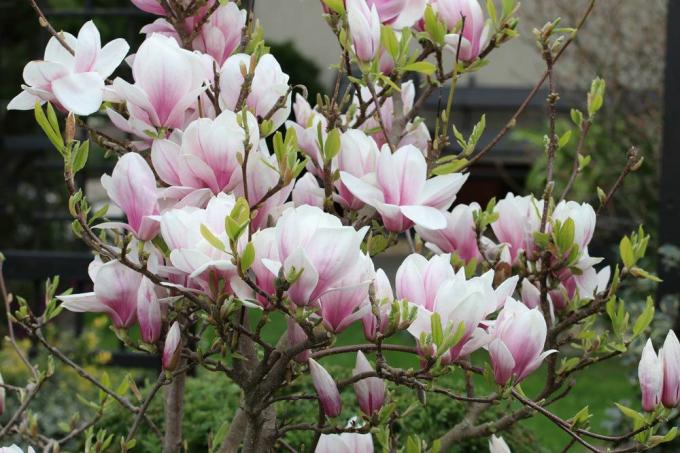
- Red currant (Ribes rubrum)
- Black currant (Ribes nigrum)
- Seven-sons-of-heaven-shrub (Heptacodium miconioides)

- Gooseberry (Ribes uva-crispa)
- Shrub vetch (Hippocrepis emerus)
- Grape elder (Sambucus racemosa)
- Bird cherry (Prunus padus)

- Clematis (Clematis)
- Wild pear (pyrus pyraster)
- Witch hazel (Hamamelis intermedia)

- Double fluted hawthorn (Crataegus laevigata)
Note: When choosing the bare-root trees, you should pay more attention to the vitality of the plant. If there are signs of deficiency symptoms, diseases or a pest infestation, you should not purchase the plant, as it could otherwise perish over the winter.
Spring planting time: table for 29 shrubs
While autumn planting is mainly used to prepare for the next season, plants are planted in spring that need to establish themselves before winter. These mainly include:
- not absolutely hardy species
- frost-sensitive taxa
- evergreen deciduous shrubs
- deciduous shrubs
- Container plants
- Growths with root balls
Many of the species would not survive the winter if they were planted in autumn in their native latitudes. For this reason, they are granted a season in which they can grow and establish themselves at the location. Most of the time you can look forward to a flower immediately if it is well-cared for Goods because enough fine roots have already been formed for the absorption of nutrients to have. In contrast to the specimens planted in autumn, however, you have to pay more attention to the water supply over the spring, as otherwise drought problems arise. The list for the plants to be planted in spring is huge. To do this, take a look at the list below:
- Bitter orange (Citrus × aurantium)
- Blackberry (Rubus sect. Rubus)
- Boxwood (Buxus sempervirens)

- Yew tree (Taxus baccata)
- Buckthorn (Rhamnus frangula)
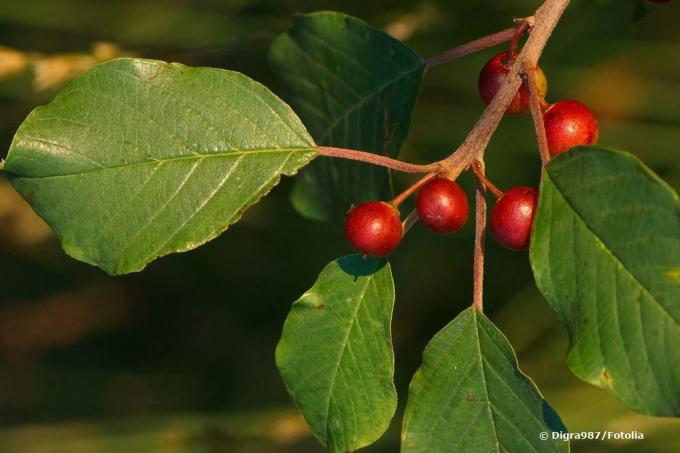
- Forsythia (Forsythia)
- Frank line (Franklinia alatamaha)

- Common Juniper (Juniperus communis)
- Common Judas Tree (Cercis siliquastrum)
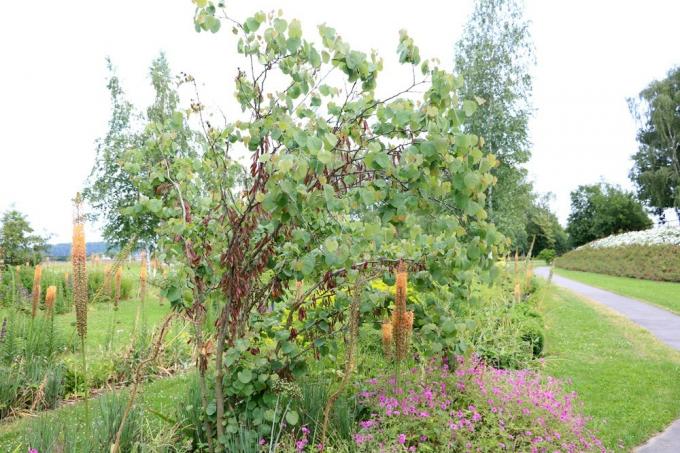
- Laburnum (Laburnum)
- Hibiscus (hibiscus)
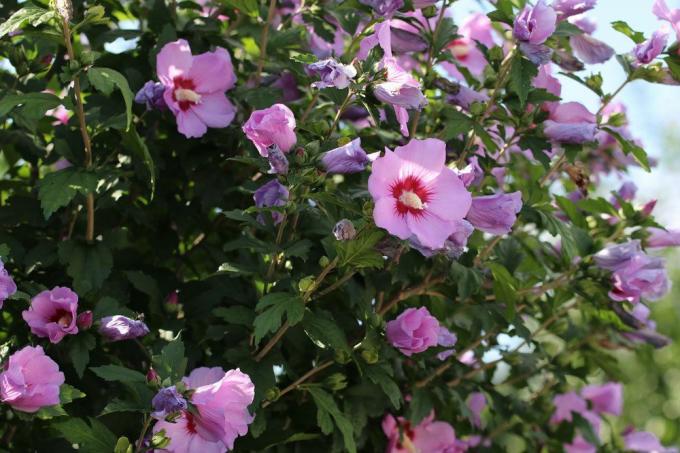
- Hydrangea
- Beautiful Leycesteria (Leycesteria formosa)
- Cherry laurel (Prunus laurocerasus)
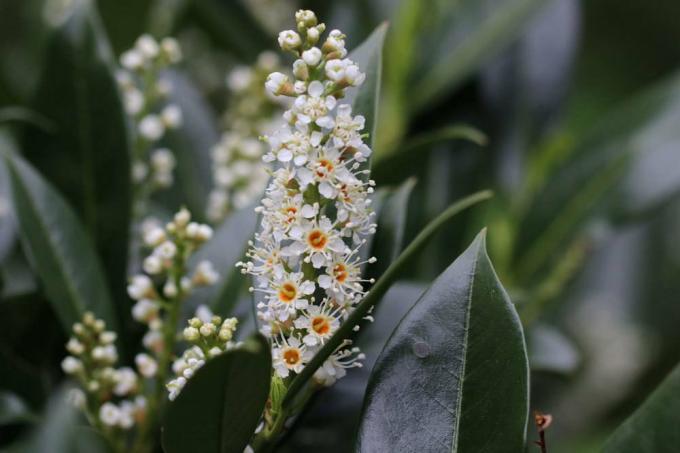
- Buckthorn (rhamnus)
- Lavender (Lavandula)

- Trees of life (Thuja)
- Love pearl bush (Callicarpa giraldii)
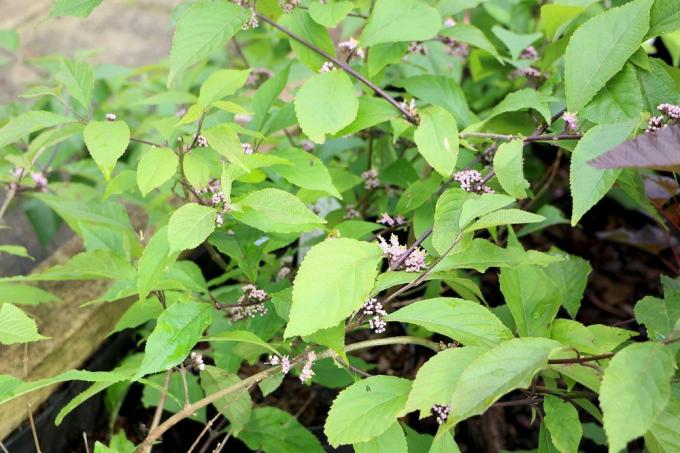
- Almond tree (Prunus triloba)
- Black pepper (Vitex agnus-castus)

- Red dogwood (Cornus sanguinea)
- Red honeysuckle (Lonicera xylosteum)

- rhododendron (Rhododendron)
- Butterfly lilac (Buddleja davidii)

- Snow Forsythia (Abeliophyllum distichum)
- Bush horse chestnut (Aesculus parviflora)
- Rowanberry (Sorbus aucuparia)

- Winter jasmine (Jasminum nudiflorum)
- Dwarf whitebeam (Sorbus chamaemespilus)
Tip: Repot bushes in spring on frosty days, but wait for warmer temperatures. However, frosts cannot cause damage to fully established specimens, which could nevertheless be avoided.
Table: 14 shrubs for autumn and spring planting
Some trees can even be planted in spring and autumn compared to those already mentioned. A good example of this are roses, which can be planted bare-rooted, with root balls or as container goods as desired. It is even possible to plant bare-root roses at the beginning of March, especially if they are wild roses such as the dog rose (Rosa canina) or potato rose (Rosa rugosa). These are particularly robust and establish themselves quickly enough before damage can occur. But roses aren't the only shrubs that you can plant over the two periods. The following table introduces you to a few more plants:
- Mountain laurel (Kalmia latifolia)
- Chinese spice bush (Elsholtzia stauntonii)
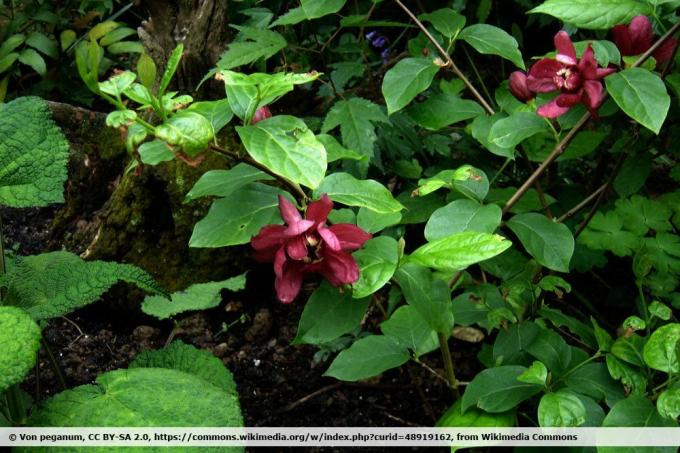
- Chinese winter blossom (Chimonanthus praecox)
- Real daphne (Daphne mezereum)
- Rock pear (Amelanchier)
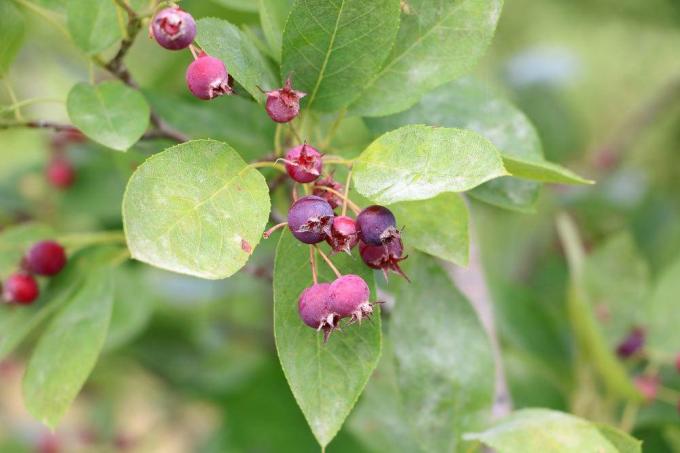
- Common euonymus (Euonymus europaeus)
- Hornbeam (Carpinus betulus)
- Kitten willow (Salix caprea)
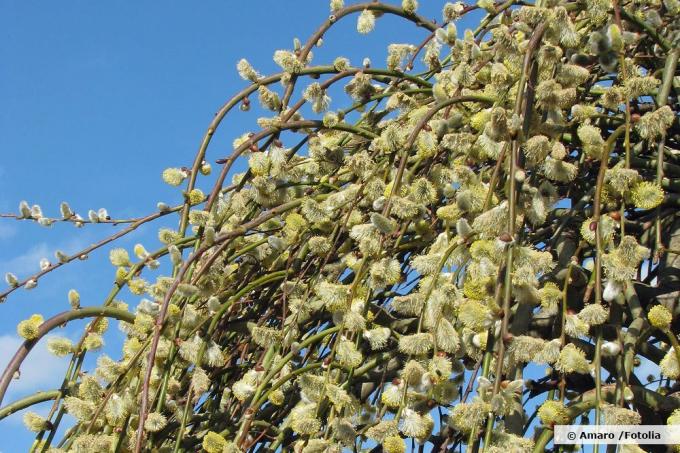
- Buckthorn (rhamnus)
- Sloe (Prunus spinosa)
- Snowballs (viburnum)
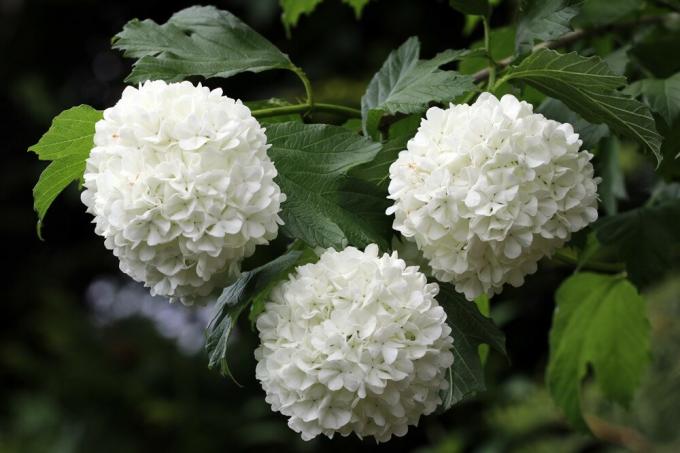
- Snowball-leaved bladder spar (Physocarpus opulifolius)
- Black chokeberry (Aronia melanocarpa)
- Black elder (Sambucus nigra)
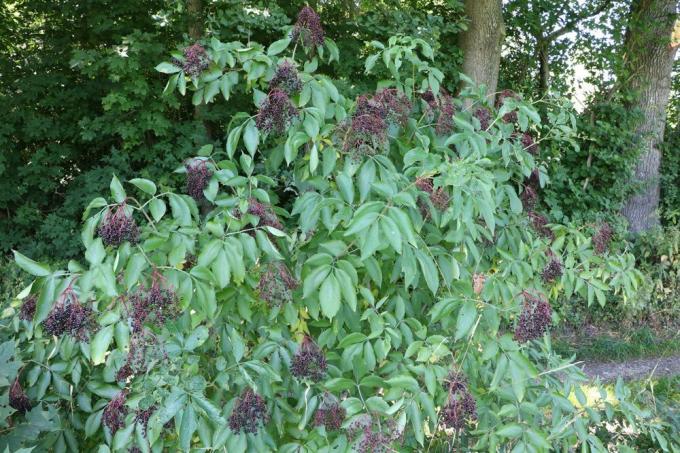
frequently asked Questions
Summer planting is possible if it is container goods that are of high quality and therefore much healthier. These can even be planted all year round, with the exception of frost days. The water supply is very important, because many plants dry out quickly if they are not sufficiently watered. Pot-ball roses, for example, are well suited for summer planting. Wisteria (Wisteria), the shrub peony (Paeonia suffruticosa) and the Summer jasmine (Philadelphus coronarius).
The first year is a great challenge for the freshly planted trees. Regardless of the species, the plants are very thirsty and need a lot of water so that they can effectively establish themselves in their new location. Therefore, after planting, regularly check the vitality of the plant and the soil for drought.
The size of the pit dug for the plants is essential for a problem-free establishment on the site. A planting hole 1.5 times the size of the root ball is dug in order to provide the plants with sufficient space. In addition, loosen the soil, especially in spring, when it is just "waking up". Compacted soils have a negative effect on the growth of woody plants and worsen the supply of moisture.



